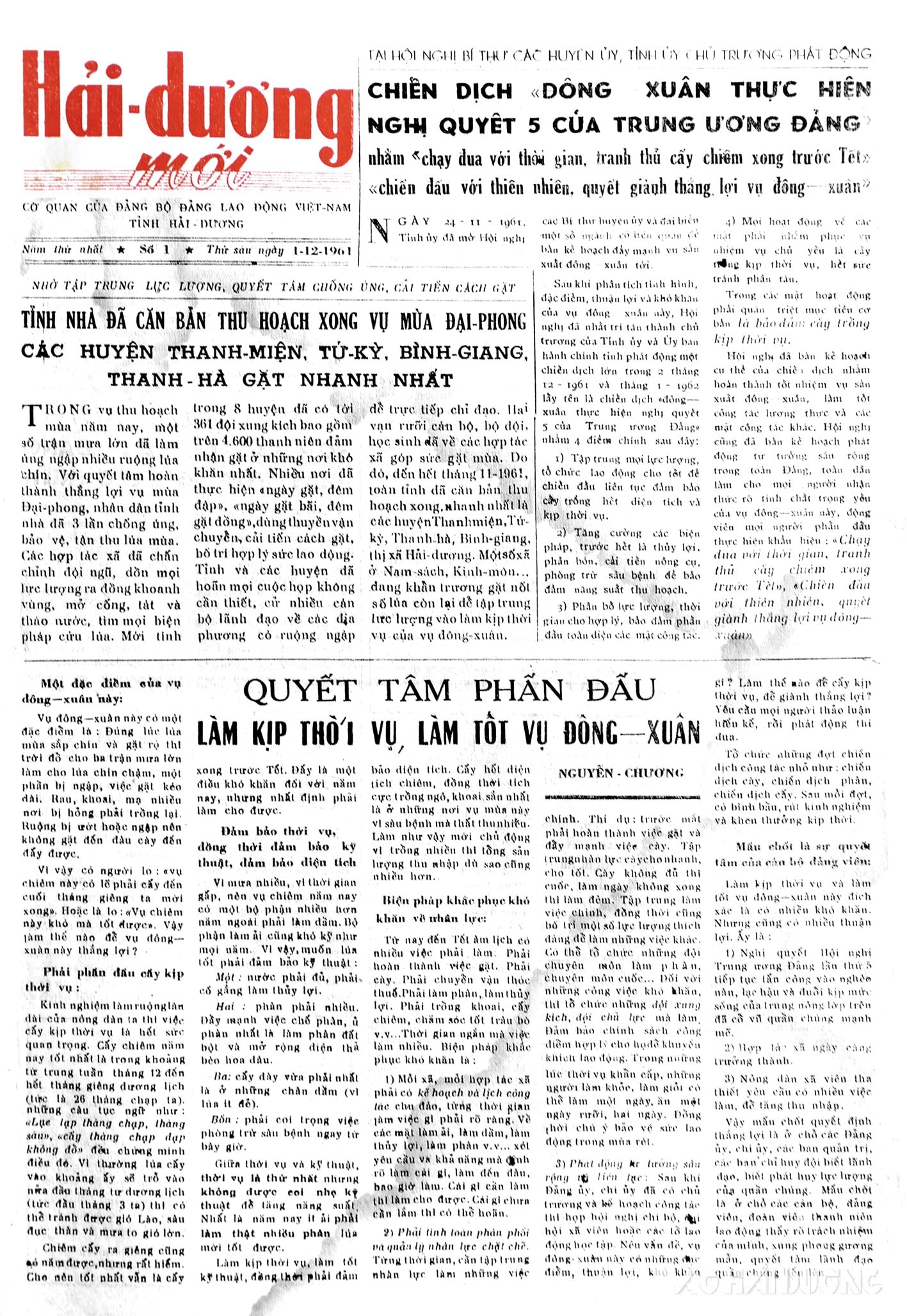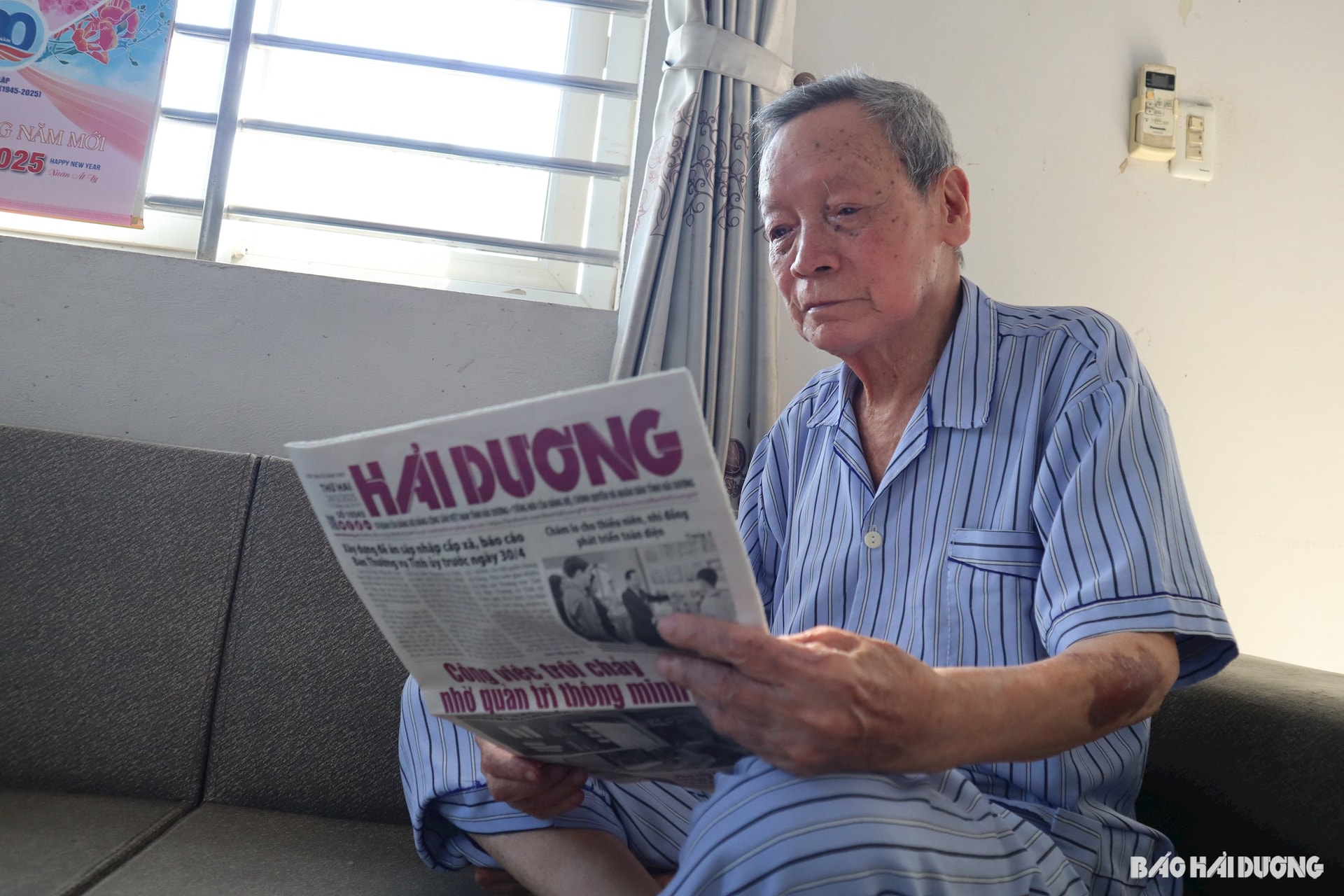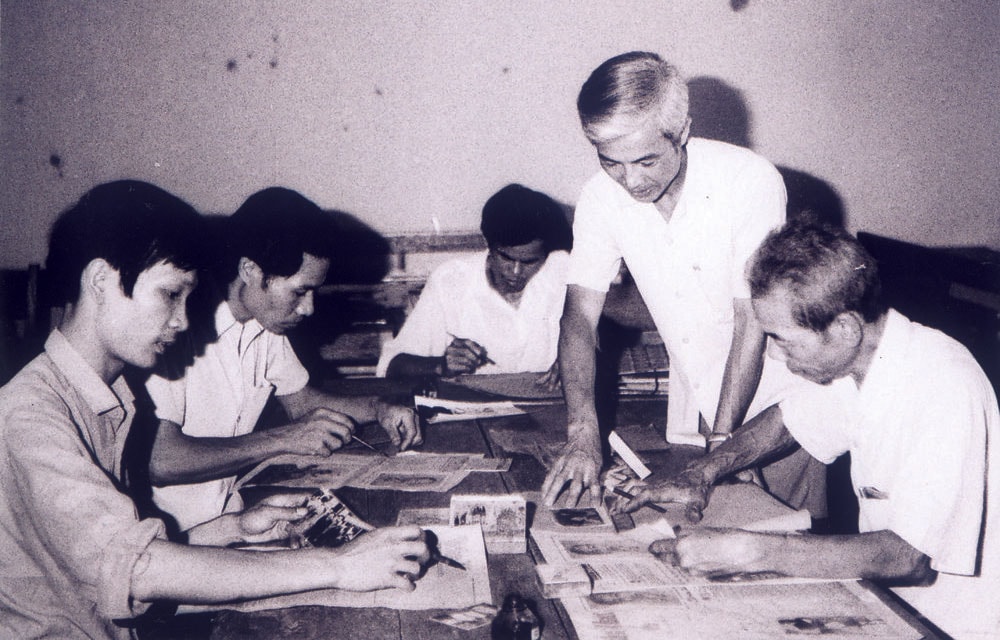
Handmade design on paper
On December 1, 1961, Hai Duong newspaper published its first issue. Because there was no artist, the reporter had to draw the sleeves, insert the columns, and design the newspaper himself.
Journalist Nguyen Huu Phach, one of the first four reporters of Hai Duong Newspaper, was assigned this responsibility. He said: “The drawing and design were done manually on paper by approximate calculation. Therefore, the accuracy was not high.” After that, the editorial office sent someone to learn how to draw boxes and calculate letters at Nhan Dan Newspaper to apply.
Journalist and poet Ha Cu, former Editor-in-Chief of Hai Duong Newspaper, recalled that in 1976, he returned to Hai Duong Newspaper (at that time Hai Hung Newspaper) to work as a painter. After the reporter's news and articles were approved, he was the one to present them on a mockup sheet the size of a newspaper. Each mockup sheet was divided into 50 boxes, each box corresponding to 50 words. Like that, each news and article would have its word count calculated to calculate the corresponding number of boxes on the mockup sheet. Also starting from counting words, once he and journalist Nguyen Huu Phach competed in counting words. "We competed to see who counted faster. Mr. Phach had experience so he counted 2, 4, 6... While I counted in order 1, 2, 3... so I lost. We both laughed. This shows that counting words is done manually, very meticulously and time-consuming," he said.

After calculating, the artist must arrange on the mockup like a real newspaper page: which news is on top, which is below, main headline, subheading, big or small depending on the newspaper's requirements and the content value of the news and article. Because the calculation is relatively accurate, there is rarely a situation of extra or missing words. If there are extra or missing words, the person in charge will have to cut or add the content in time.
Once completed, the mockup will be sent to the printer.
Hand-printed typography
In the 60s, 70s and even the 80s of the last century, most newspapers still used typographic technology, arranging types by hand.
Mr. Le Khac Duong, former Head of Administration - Management Department, Hai Duong Newspaper, used to be a worker at Hai Hung Printing Enterprise (in 1985) still remembers clearly, every time he received the mockup from the editorial office, the printing house was bustling with an urgent atmosphere, all priority was given to the political task of publishing the newspaper tomorrow.
“We have to bring lunch to work, even stay up all night to complete the task on time,” Mr. Duong said.
Dozens of people were in charge of arranging the letters. These were small lead typefaces (the same size as printed letters in newspapers) with all the letters: a, b, c… Each letter was placed in a separate tray. For example, to assemble the letter “Ba”, the workers had to pick up two separate letters to put together, including: B, a, and of course they had to put them together in reverse so that when printed on paper they would produce the letter “Ba”. The same was true for the other letters. When there were periods, exclamation points, question marks, commas, parentheses…, the workers picked up those marks and put them in.

The reverse typesetting like a matrix requires the worker to be sharp-eyed, quick and experienced. The typesetter works in turn, from the title, content to the end of the news, article to form each newspaper page. Next, use an ink roller to roll over the typeface and then cover it with a thin paper. The result is called a printed copy used for proofreading and editing.
Due to outdated technology, typesetting takes time and effort, so the editorial office must coordinate closely with the printing house. To match the time, usually 2 inside pages will be sent to the printing house about 1 day before publication for typesetting. The outside pages will wait for news and current affairs articles to be posted later.
At that time, photos had to be printed on zinc plate, while paintings were woodcut. As for the photo processing, photojournalists had to go all the way to Hanoi to do it. Later, the process of making zinc plates was done at Hai Hung Printing Factory, so photojournalists no longer had to go to Hanoi.
The preparation steps are completed, the metal zinc image is combined with lead letters on the printing plate, and the printing machine is installed to print the newspaper.
Until the printing is finished, the typesetter picks up each letter and puts it back in its correct position on each tray, to continue using it in the next printing. This process is often called by the phrase: “arrange, fix, and put away” (that is, arrange, fix, and put the letters back to their original position).
In 1991, Hai Hung newspaper switched from letterpress printing to offset printing.
In 2011, Hai Duong newspaper stopped designing and manually layout pages on paper mock-ups and switched to using computers. Printers also gradually used modern CTP (Computer-to-plate) printing technology, eliminating the intermediate film step, shortening time, reducing labor, and providing better print quality.
Source: https://baohaiduong.vn/thiet-ke-in-bao-thoi-bao-cap-413826.html







































































































![Dong Nai OCOP transition: [Part 2] Opening new distribution channel](https://vphoto.vietnam.vn/thumb/402x226/vietnam/resource/IMAGE/2025/11/09/1762655780766_4613-anh-1_20240803100041-nongnghiep-154608.jpeg)













Comment (0)